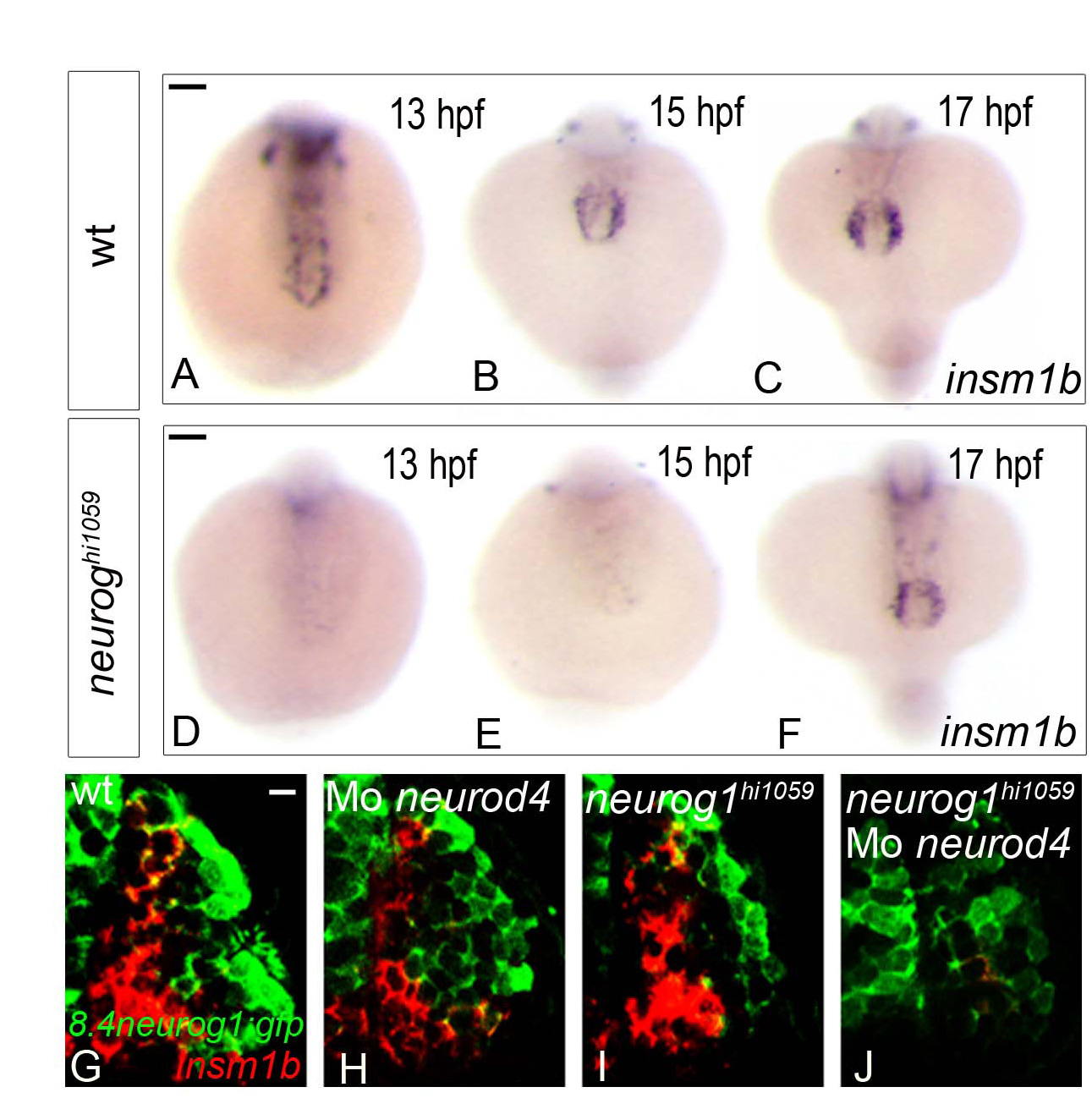Fig. S4
insm1b behaves as a proneural target in the developing zebrafish olfactory system. (A-F) Whole-mount in situ hybridisation against insm1b in wild-type (A-C) and neurog1 mutant (D-F) zebrafish embryos at 13 (A,D), 15 (B,E) or 17 (C,F) hpf. Although insm1b expression is absent in embryos up to 15 hpf in the mutant, its expression recovers at 17 hpf. Embryos are viewed dorsally with anterior down (D-F). (G-J) Confocal projections of in situ hybridisation and immunolabelling against insm1b and GFP in the olfactory placodes of wild-type (G), neurod4 morphant (H), neurog1 mutant (I) and neurog1/neurod4 double loss of function (J) embryos in Tg(8.4neurog1:GFP) embryos at 24 hpf. At this stage, insm1b+ cells are lost only in the neurog1/neurod4 double loss of function situation (J) suggesting that these two proneural factors are redundantly required in olfactory sensory neuron progenitors. Placodes are oriented with anterior up and lateral to the right. Scale bars: in A, 100 μM for A-C; in D, 100 μM for D-F; in G, 10 μM for G-J.

